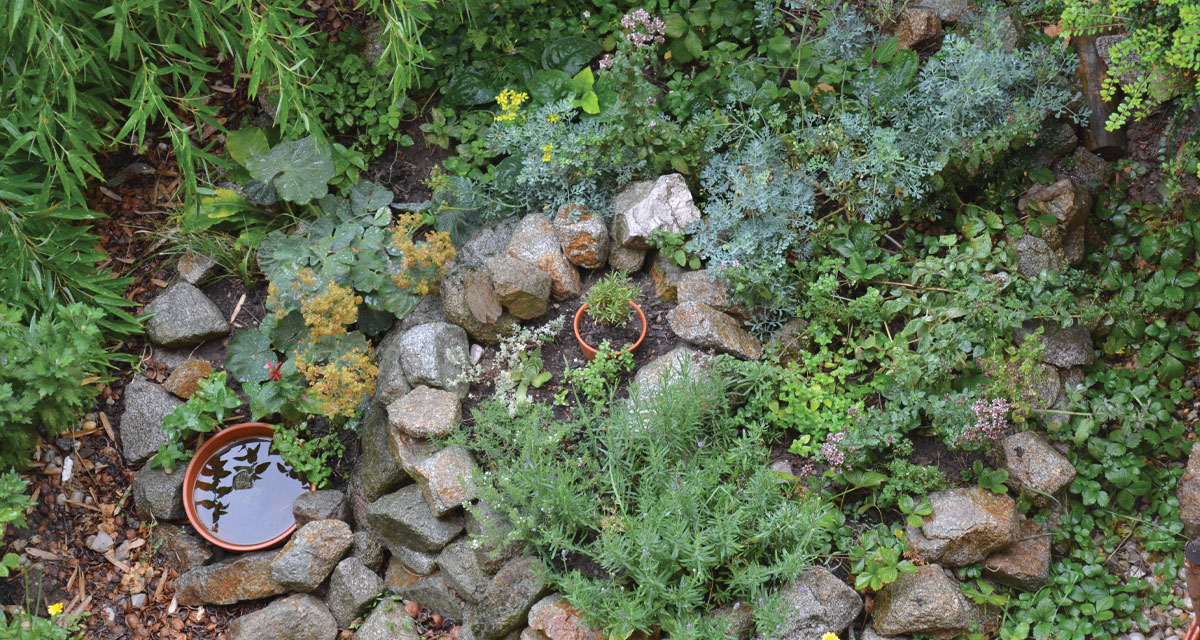Whether information on the topic of permaculture arrives in the form of a podcast, seminar, or television program, the approach to working with nature, rather than fixing it, can change not just your ideas, but your systematic way of life. By combining the words permanent and agriculture, the goal is to view problems with a broader lens to create a solution for not just one issue, but four. If you are thinking, “I’m just a homeowner; how can this philosophy possibly relate to me?” Just wait! It does!
Accepting the Environment as It is!
High expectations are a driving force in causing many efforts to end well before they begin. Gardening, frequently, appears romantic. Beautiful illustrations of the harvest or flower garden lead individuals with a vision that may not include the long hours of effort. From day one, overwhelming complications appear, such as large rocks and poor soil conditions.
Creating Zones
The goal of permaculture is to save time and energy by reducing your number of steps; therefore, divide your yard into growing zones, according to the frequency you visit an area. Most often, if we have a sitting area, the plants receive more attention, due to a desire for optimal beautification.
Ask yourself, “How far does zone one extend?” Do you frequent particular pathways, perhaps leading to a flower or vegetable garden, or another location in the yard? Is it still part of zone one? Accent by adding some form of vegetation. Herbs and vegetables are ornamental; or, consider whether you need a windbreak. You have just identified a secondary purpose; therefore, install a trellis and plant a flowering vine for pollinators. And, you have a third purpose!
Tip: If you frequently use fresh herbs, accent your front porch or deck with favorites! Keep in mind, Rosemary, chives, Basil, and lavender deter pesky bugs, such as mosquitoes and flies! Mints repel spiders and ants, too!
Drawing a Design
From the perspective of looking down upon your plot of land, represent circles with trees, shrubs with squares, and other aspects in symbols. Viewing your location architecturally may offer a visual perspective on ways to widen zones one and two, or make use of zone five.
The Problem of Water, Too Much or Too Little
Do you drag heavy water hoses throughout the yard? Gardeners can change habits by implementing permaculture techniques. One goal is to determine how an element or plant can foster care for another plant; therefore, discover how your water flows. Does it spread and drain or pull to the surface? Use nature to aid in fulfilling your needs by:
- Planting foliage on slopes.
- Using mulch.
- Adding leaves annually to the surface of gardens in the fall to amend the soil.
- Capturing rainwater in barrels to create a slow-drip irrigation system.
- Leaving barren locations alone.
Solve Five Problems
The issues often appear overwhelming; yet, one solution may bring surprises. For instance, a location with powerful winds may require the planting of shrubs or trees. In time, it will promote shade and privacy. Based on the type of tree, its fruits, nuts, or flowers may feed, and become a home for, future pollinators, insects, and wildlife.
How could the following solutions be integrated into your living space?
- A trellis offers privacy, supports climbing plants, and promotes shade for another purpose.
- Mulch conserves moisture, feeds plants, suppresses the growth of weeds, aids insects and burrowing animals.
- Many herbs, such as borage, chives, dill, lavender, oregano, and thyme have medicinal values, attract beneficial insects, spread to prevent erosion, and offer a visual appeal to the gardener.
- Ponds create a visual and auditory appeal, attract birds, are a water source for insects and other creatures, grow aquatic plants, and hold fish.
Application to Life
The permaculture principle also applies to daily life. The next time you face a challenge, remember there is a positive in all situations. Take a moment to find the benefit!



















